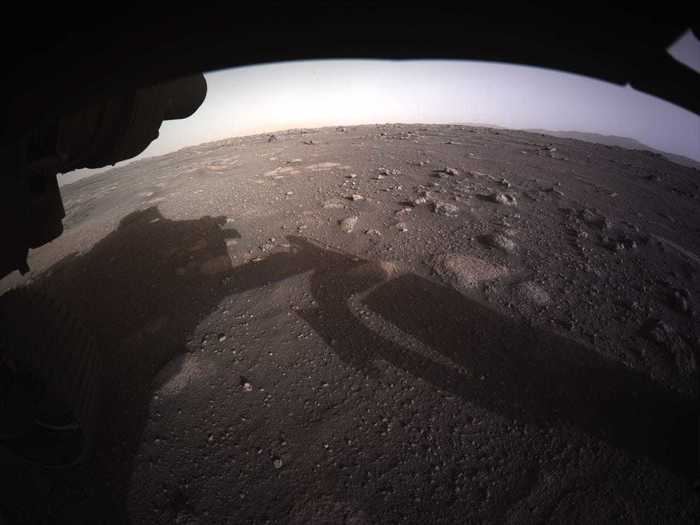
An artist's illustration shows NASA's Perseverance rover and Ingenuity helicopter on Mars.NASA/JPL-Caltech
NASA's Perseverance rover hasn't started roaming the red planet just yet, but its cameras have been busy at work.
A suite of ruggedized, off-the-shelf sports cameras captured unprecedented footage of the rover descending to Mars and landing in Jezero Crater on Thursday. Then the rover's science and navigation cameras began snapping away as soon as it was on the ground. The results are breathtaking.
So far, NASA has published more than 4,700 images from the rover, with many more to come.
"It's been a firehose of data," Justin Maki, a Perseverance imaging scientist and the chief of the instrument-operations team, said in a press conference on Monday.
The new photos reveal the sand dunes, rocks, and distant 200-foot-tall cliffs of the ancient lake bed where Perseverance now sits. It's the most hazardous terrain any Mars landing has ever targeted, but it's already paying off in unprecedented portraits of the red planet.
"I review images for Mars, like, every day. That's what I do. And when I saw these images come down, I have to say, I was truly amazed," Maki said. "I know it's been a tough year for everybody, and we're hoping that maybe these images will help brighten people's day."


NASA has also released a three-minute video of the rover's descent and landing. Watch it and read more here.
















 As Ilya Sutskever announces OpenAI exit, here’s a quick recap of his involvement in Sam Altman's firing last year
As Ilya Sutskever announces OpenAI exit, here’s a quick recap of his involvement in Sam Altman's firing last year
 DHFL scam, simplified: Here’s all about the Dheeraj Wadhawan case — allegedly India’s biggest banking loan fraud ever
DHFL scam, simplified: Here’s all about the Dheeraj Wadhawan case — allegedly India’s biggest banking loan fraud ever
 India-UK trade pact: Work in progress to resolve pending issues
India-UK trade pact: Work in progress to resolve pending issues

Copyright © 2024. Times Internet Limited. All rights reserved.For reprint rights. Times Syndication Service.